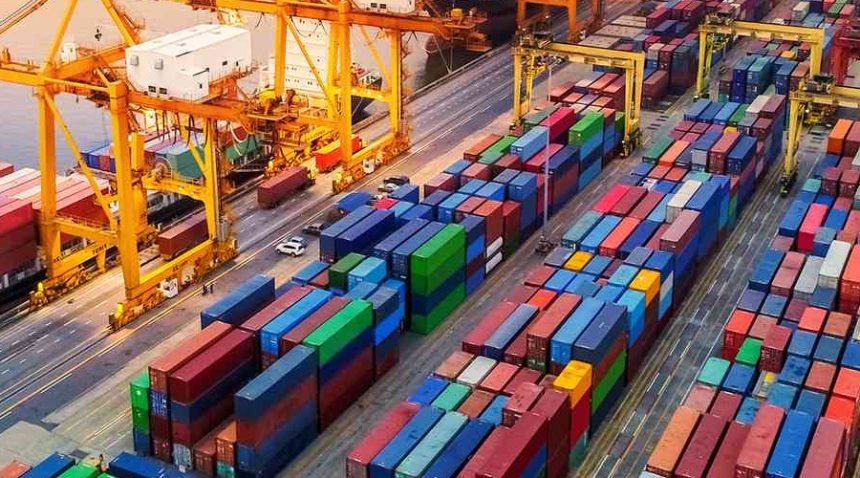Consumer costs are expected to rise, with households paying up to $1,250 more per year on essential goods
The global retail landscape is undergoing significant upheaval due to recent trade policies implemented by the United States under President Donald Trump’s administration. The imposition of tariffs on imports from key trading partners—China, Mexico, and Canada—has introduced a complex array of challenges for major retail chains, affecting everything from supply chains to consumer prices.
Walmart’s Strategic Adjustments
Walmart, the world’s largest retailer, reported robust sales and profits throughout 2024, largely attributed to inflation-conscious consumers seeking competitively priced products. However, the outlook for 2025 appears less certain. The company has projected that its earnings per share could fall up to 27 cents below analyst expectations, with only modest sales growth anticipated.
This cautious forecast has been influenced by potential consumer hesitancy and the impact of tariffs on goods imported from China and other countries. Notably, two-thirds of Walmart’s merchandise is sourced domestically, primarily groceries, which provides some insulation against international trade fluctuations.
However, tariffs on materials like aluminum and steel are expected to lead to price increases in certain product categories. In the quarter ending January 31, 2025, Walmart reported earnings of $5.25 billion, with a 4.1% rise in sales to $180.55 billion. Despite these gains, the company remains cautious about future economic impacts stemming from new tariff increases and their potential effects on consumer spending.
Target’s Increased Exposure
Target, another major U.S. retailer, finds itself more exposed to the adverse effects of the new tariffs compared to Walmart. This heightened vulnerability is primarily due to Target’s significant reliance on imported merchandise, such as apparel and housewares, which are subject to the increased tariffs. In contrast, Walmart’s substantial grocery segment, predominantly sourced domestically, offers a buffer against these trade policy shifts. The higher costs resulting from tariffs pose a challenge for Target, as passing these costs onto consumers could impact sales, while absorbing them could compress profit margins. This delicate balancing act underscores the complexities retailers face in navigating the current trade environment.
Supply Chain Realignments
The imposition of tariffs has prompted businesses to reevaluate their supply chains, with many considering relocating production out of China to mitigate the financial impact. However, this strategy is fraught with challenges. Companies like Lalo, specializing in baby products, have found that relocating manufacturing operations is prohibitively expensive due to established relationships with compliant Chinese manufacturers.
Similarly, Joe&Bella, an adaptive wear brand, highlights the difficulty in sourcing specialized products outside China. The rapidly changing tariff policies add to the uncertainty, making immediate moves difficult. Experts emphasize the challenges businesses face due to unpredictable policy shifts, leading companies to negotiate costs with suppliers to mitigate tariff impacts and avoid significant price hikes for consumers.
Impact on Consumer Prices
The tariffs are expected to have a direct impact on consumer prices across various sectors. Products such as toys, electronics, apparel, and even groceries are anticipated to see price increases as retailers adjust to the higher import costs. Economists predict that these tariffs could result in households paying an additional $1,250 annually.
Items like avocados from Mexico, electronics manufactured in China, and automobiles assembled with parts from Mexico are among those likely to become more expensive. This escalation in prices may lead consumers to alter their purchasing habits, potentially seeking alternatives or reducing discretionary spending.
Fashion Industry Challenges
The fashion industry is particularly susceptible to the ramifications of the new tariffs. Many apparel brands rely heavily on Chinese manufacturing for their products. The additional costs imposed by tariffs are prompting these companies to explore alternative sourcing options, though such transitions are complex and time-consuming.
Some brands are turning to artificial intelligence (AI) to navigate these challenges. AI-driven solutions offer predictive analytics and inventory optimization, allowing brands to simulate financial impacts, adjust forecasts, and optimize stock strategies in response to tariff-induced cost fluctuations. This technological adoption aims to mitigate the financial strain and maintain competitiveness in a turbulent market.
Global Supply Chain Resilience
The current trade policies have underscored the need for more resilient and diversified supply chains. Businesses are increasingly recognizing the risks associated with over-reliance on a single country for manufacturing needs. In response, some companies are considering reshoring operations or diversifying their supplier base to include multiple countries.
This strategic shift aims to reduce vulnerability to geopolitical tensions and trade policy changes. However, such overhauls require significant investment and time, and their feasibility varies across industries. The long-term benefits of a resilient supply chain are becoming a priority in corporate strategy discussions.
Economic Uncertainty and Future Outlook
The broader economic implications of these trade policies are contributing to an atmosphere of uncertainty. Federal Reserve officials have expressed concerns about the potential for increased inflation and its impact on economic growth.
The unpredictability of trade relations and the possibility of further tariffs make it challenging for businesses to plan for the future. Retailers, in particular, are bracing for potential shifts in consumer behavior as prices rise and economic conditions fluctuate. This environment necessitates agile business strategies and close monitoring of policy developments to navigate the evolving landscape effectively.
In conclusion, the recent trade policies have introduced a complex set of challenges for major retail chains. From supply chain realignments and increased consumer prices to strategic adjustments by industry leaders like Walmart and Target, the ripple effects are profound. As the situation continues to evolve, retailers must remain adaptable, leveraging technology and strategic planning to mitigate risks and sustain operations in this turbulent economic climate.






